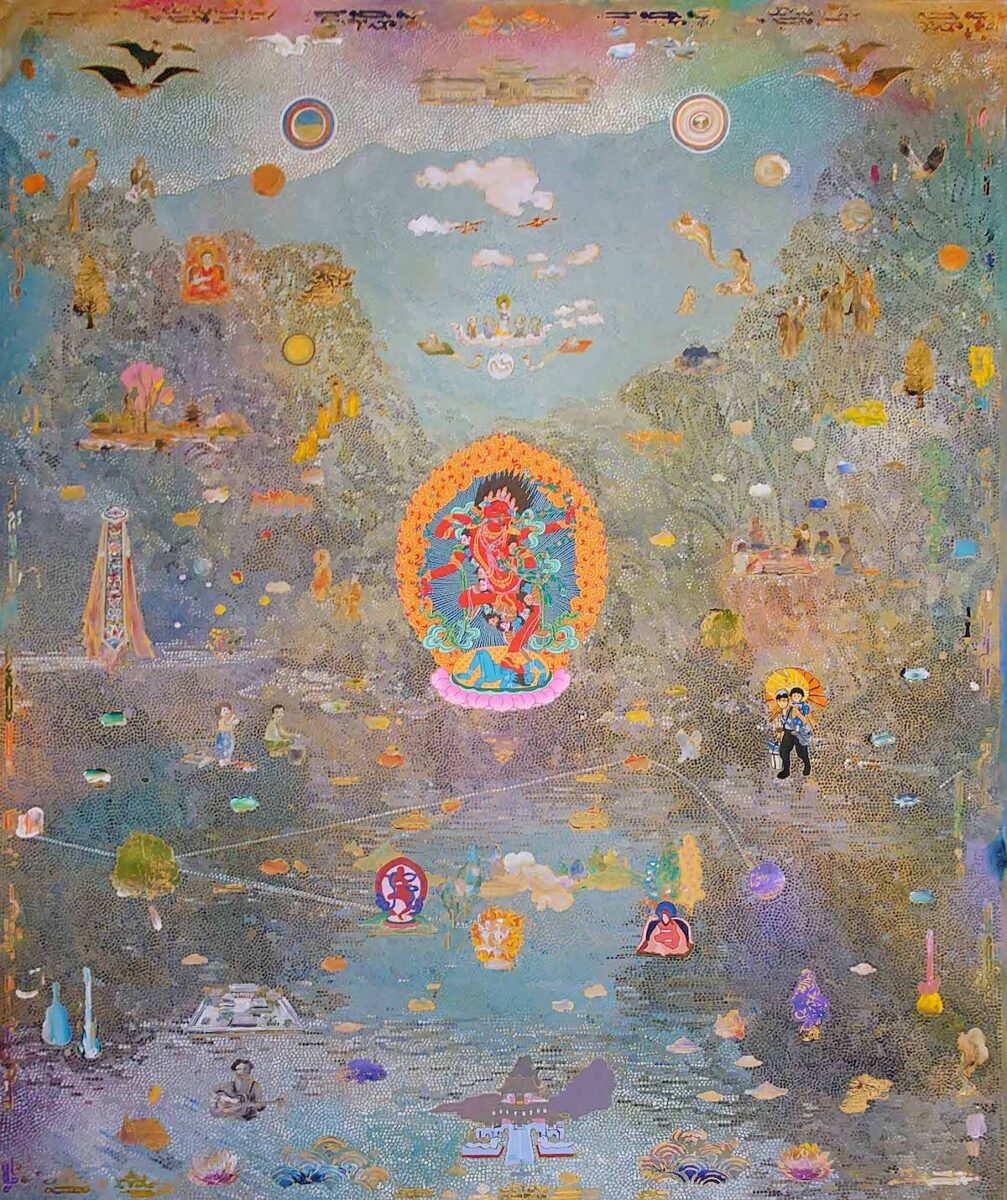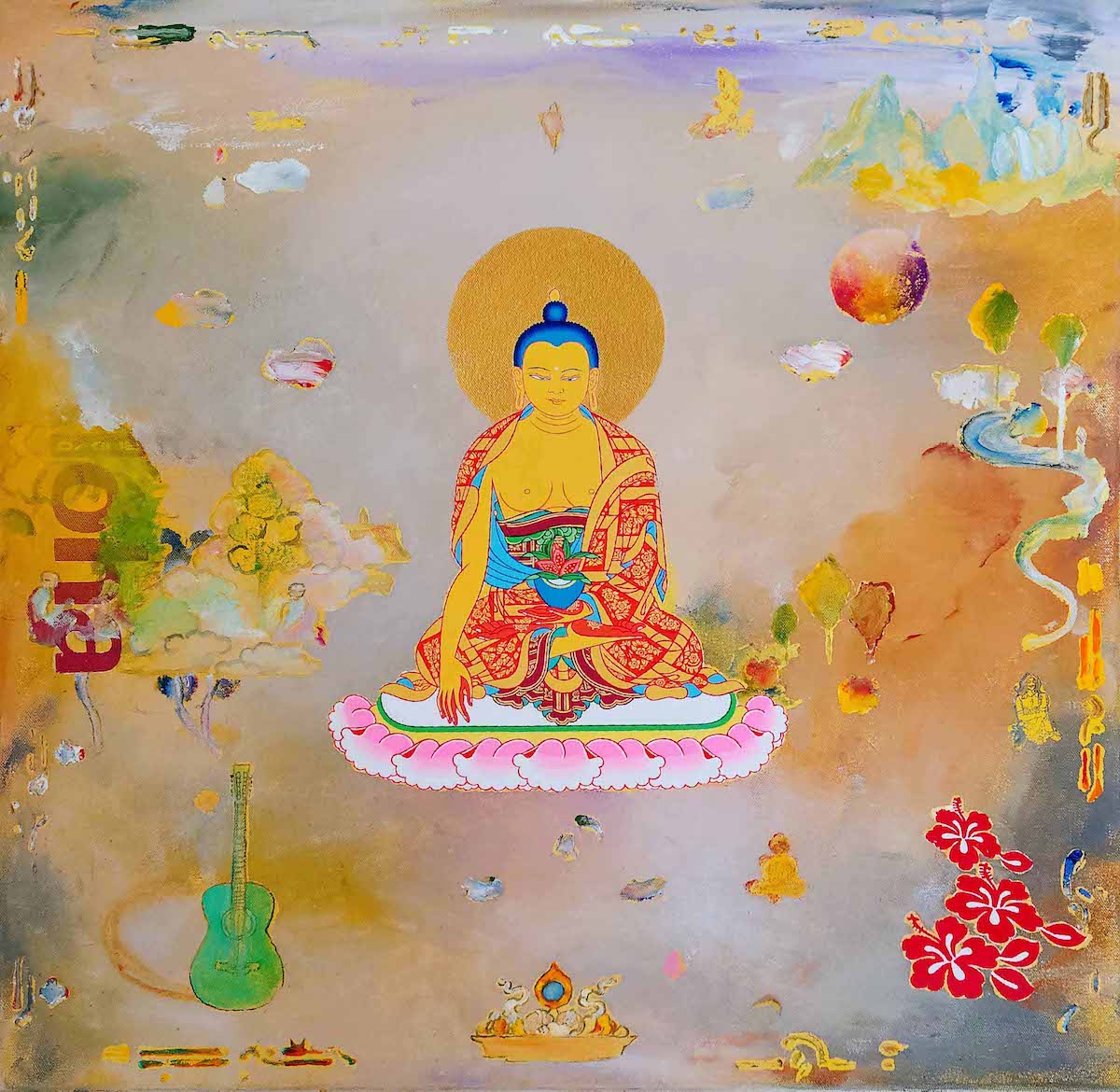
Making Space at the Table
NAP Contemporary’s group show, The Elephant Table, platforms six artists and voices—creating chaos, connection and conversation.




Collaboration seems to come naturally to Tim Johnson, whose interest in exploring connections between spiritual disciplines and the material world brings with it an openness to many approaches. In his latest pieces, he has been working with a psychology professor he encountered at his group-studio in Newtown, and they have produced paintings that burst with stories and allusions.
Johnson’s interest in working with others extends back to the 1980s when he collaborated with Papunya artists, who were enthusiastic about teaching and sharing their methods. In Johnson’s new works, images seem to be suspended in an otherworldly atmosphere. For their first painting together, Johnson and his collaborator decided to tackle the Book of Revelations (the final book of the New Testament), which Johnson says many artists have used as a foundation because of its rich imagery of angels, horsemen, beasts and other, more obscure references. “I like it as a piece of writing,” he says.
While his collaborator is interested in the darker side of Revelations—owed to his explorations of the unconscious and human suffering during therapy sessions—Johnson prefers a more light-filled approach. Working on a painting, they take turns rather than operating side-by-side—and it has become evident that while Johnson enjoys slow research and a refined method of working up in layers, his co-worker loves to jump in and transport imagery straight on to the canvas. Johnson is relaxed about this—it is one of the pleasures of collaborating and encountering other ways of doing things.
While there are many other works in the exhibition—including another collaboration with the psychologist on the Book of Genesis—Johnson’s tendency towards Buddhism and its focus on the joy of the present moment remains threaded throughout.
Tim Johnson
Tolarno Galleries
17 August—14 September
This article was originally published in the July/August 2024 print edition of Art Guide Australia.
